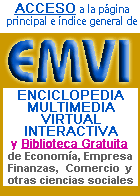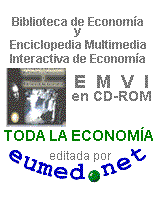

 
|
  |
ESTADIAS FERROVIARIAS EN EL PUERTO DE VERACRUZ
A. Garcia, J.J.Sanchez , G. Herrera y D. Vazquez
Esta página puede carecer de formato, fórmulas, notas, gráficos o tablas. Para obtener el texto completo en formato DOC comprimido ZIP pulse aquí
Resumen
En la presente investigación se analizaron los tiempos de estadía de las tolvas del Ferrocarril dentro del recinto fiscalizado del Puerto de Veracruz, ya que el tiempo actual esta ocasionando que se pare el proceso productivo de descarga. La principal función del este puerto es importar y exportar carga, teniendo en su proceso principal los siguientes conceptos: descarga, tramitación y retiro Ferroviario. Si cualquiera de los procesos se desvía, ocasiona que los buques se detengan en las maniobras, provocando acumulamientos de unidades ferroviarias, es decir, se detiene totalmente el proceso de desalojo, ocasionando serios trastornos operativos para poder desbloquear el cuello de botella.
Dado que el Ferrocarril es el último eslabón de la cadena logística del proceso de desalojo de unidades, se le atribuye la responsabilidad de las ineficiencias de los diferentes actores del proceso de desalojo. Por lo que en la presente investigación se busco observar una muestra de granos de importación con desalojo por ferrocarril por el método aleatorio simple, calculando la muestra y obteniendo como resultado, 276 carros a analizar, sin embargo la prueba se llevó a cabo con 250 carros por barco. Para este propósito se analizaron 4 buques: Barco Federal Welland V-1, Barco Federal Yucon, Barco Federal Alam Aman II, y el Barco Scandinavian Express. El análisis estadístico que se uso para probar las hipótesis de prueba fue el método de regresión múltiple. Los resultados obtenidos, mostraron una correlación múltiple (R=>0.5), en el caso de la variable TMA (Tiempo de Maniobra) como la que mayor incidencia tiene en la Estadía de las Unidades. Al final y dado que las infraestructuras ferroviarias son limitadas y los diferentes actores tienen intereses propios a las tareas que tienen encomendadas, el presente estudio recomienda un centro integral de servicios, que abata los tiempos de traslado y mejore la comunicación.
Palabras Clave: Estadías de Unidades3, Trámites4, Agente Aduanal5, Retiro del Ferrocarril.6
Abstract
In this research were analyzed demurrage times of the hoppers of Railroad inside the investigated enclosure, in the Veracruz Harbor, because the current time, has been the main factor to the stops the productive process of discharge. The main function of the Veracruz Harbor is to import and export load in bulk, having in its main process the following concepts: Discharges, Procedure and Rail retirement. If anyone of these processes strays, it’s the main causes that the ships stop in the maneuvers, causing accumulations of rail units, totally stops the process, causing serious operative dysfunctions to be able to unblock the bottle neck.
The Railroad is the last link of the logistical chain of the process to remove units. And is attributed the responsibility of the inefficiencies of the different factors of the process to remove. In the present investigation we find watch a sample of import grains with remove for railroad through simple random method, calculating the sample and obtaining as a result, 276 cars to analyze, however the test was carried out by ship with 250 cars. For this purpose 4 ships were analyzed: Federal Ship Welland V-1, Federal Ship Yucon, Federal Ship Alam Loves II, and the Scandinavian Ship Express. The statistical analysis that we use to prove the test hypotheses was the method of multiple regression. The obtained results, they showed a multiple correlation (R=>0.5), in the case of the variable TMA (Time of Maneuver) as the one that bigger incidence has in the Demurrage of the Units. At the end and considering the rail infrastructures are limited and the different factors have interest characteristic to the tasks that have commended, the present study recommends an integral center of services that knocks down the times of transfer and improve the communication.
Keywords: Demurrages of Units, Steps, Custom Agent, Remove of the Railroad.
1 Investigadores del Centro de Investigación del Área Económico-Administrativo. Universidad Cristóbal Colón, Campus Calasanz. Carr. Veracruz-Medellín s/n Col. Puente Moreno, Boca del Río, Ver., Tel. (01 229) 9230170 al 76 Ext. 2060. agarcias@aix.ver.ucc.mx http://dgip.ver.ucc.mx
http://dgip.ver.ucc.mx/CENTROS/CIEA/CIEA.htm.
2 Gerente de servicios Operativos Ferrosur. 9-89-58-69/70.
jjsanchezs@ferrosur.com.mx
3 Es la cantidad de tiempo en horas que permanecen las unidades ferroviarias ya cargadas dentro del interior del recinto fiscalizado del puerto de Veracruz.
4 -Es el servicio que realiza el agente aduanal para cumplir con los documentos con las autoridades respectivas que permitan que las unidades ferroviarias tengan las autorizaciones para ser retiradas del recinto fiscalizado del puerto de Veracruz.
5 Es la empresa que tiene la facultad de realizar los trámites de importación de granos que arriben al puerto de Veracruz.
6 Esta función consiste enganchar las unidades ferroviarias a una locomotora (fuerza tractiva) para ser retirados de las vías internas del puerto de Veracruz.
Volver al índice de ESTADÍAS FERROVIARIAS EN EL PUERTO DE VERACRUZ
Volver a "Libros Gratis de Economía"
Volver a la "Enciclopedia y Biblioteca de Economía EMVI"